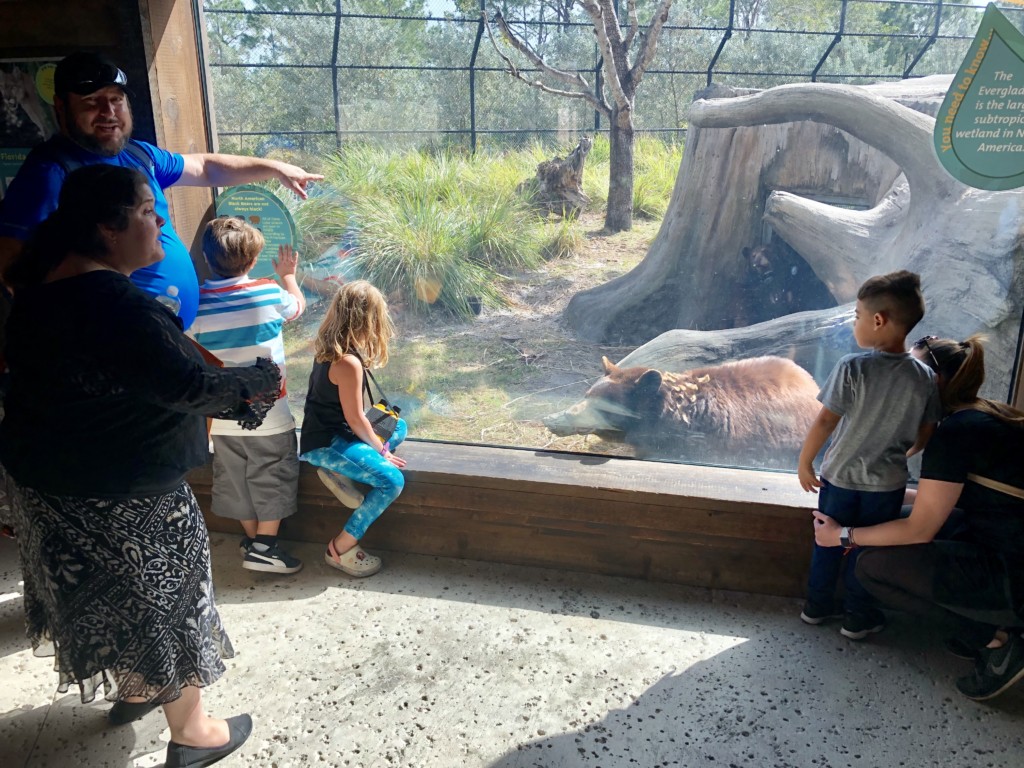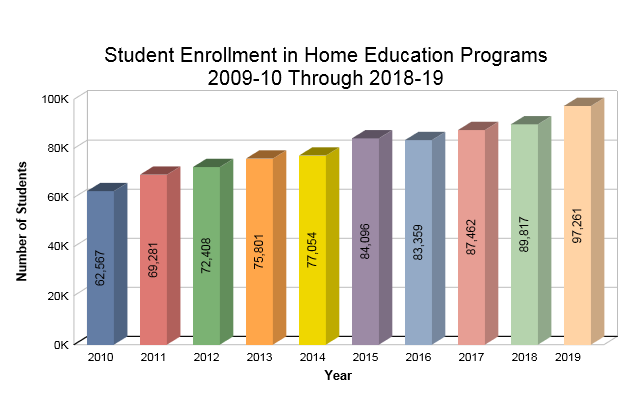
The number of home education students in Florida grew by 8.3 percent last year, significantly eclipsing the previous year’s gain of 2.7 percent and continuing an upward trend over the past decade, according to the latest annual report released by the state Department of Education.
 In the 2018-19 school year, 97,261 students participated in home education programs statewide, an increase of 7,444 from the 2017-18 school year. In the last five years, the number of students in home education has increased by 13,165, or 16 percent, over the 84,096 students reported in 2014-15, with a five-year average of 88,399 students.
In the 2018-19 school year, 97,261 students participated in home education programs statewide, an increase of 7,444 from the 2017-18 school year. In the last five years, the number of students in home education has increased by 13,165, or 16 percent, over the 84,096 students reported in 2014-15, with a five-year average of 88,399 students.
Districts with the largest percentage of homeschooled students in 2018-19 were Duval, with 7,258, or 7.5 percent of the district’s total student population; Hillsborough, with 7,117 or 7.3 percent; Orange, with 6,161 or 6.3 percent; Palm Beach, with 5,322 or 5.5 percent; and Broward, with 5,103, or 5.2 percent.
Homeschool enrollment increased in each of these districts from 399 to 967 students over the previous year except for Palm Beach, which saw a 106-student decline.
While the DOE report did not provide demographic breakdowns for homeschooled students, a new report from the Center on Reinventing Public Education highlights the changing landscapes of homeschooling in America. Among the findings: 132,000 black families homeschool their children, constituting about 8 percent of the overall homeschool population; and more than 400,000 Hispanic families home educate, making them about 26 percent of the total population.
By contrast, according to the report, the estimated number of white students in home education declined by more than 200,000 between 2012 and 2016.
The most recent figures from the National Center for Education Statistics indicate 1.7 million students, or 3.4 percent of the school population, participate in home education nationally.


